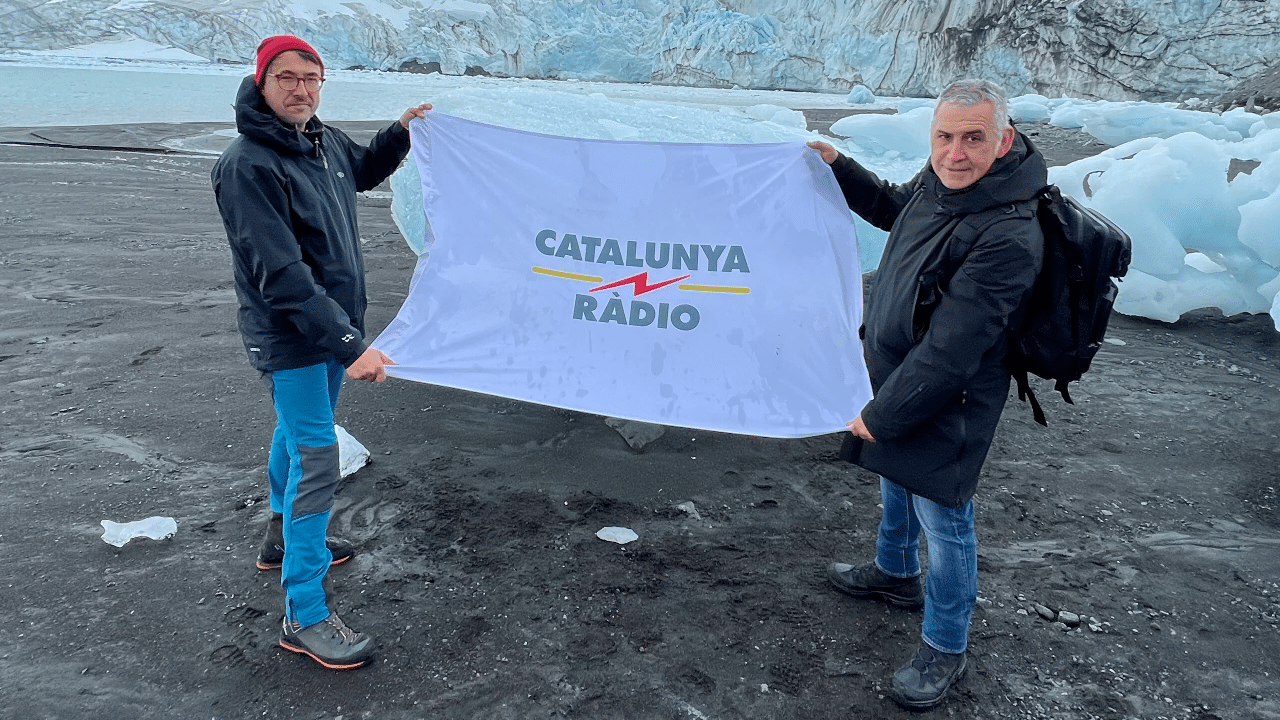LIVINGSTONE ISLAND, Antarctica — Late in 2023, Catalunya Ràdio, Catalonia’s public radio network, headquartered in Barcelona, Spain, received permission to broadcast from one of the most beautiful but hostile places on Earth — Antarctica.
The Spanish Polar Committee accepted our proposal for the project in October, which meant if we wanted to get to the world’s southernmost continent for the summer, travel preparations had to move quickly. We followed the recommended training proposed to us by the committee, which included scientific information and details on adequate clothing and footwear for working in Antarctica. The technical team prepared as well, considering factors affecting radio and television program production in a remote and often inhospitable environment with extremes of wind, rain and cold. We prioritized equipment that was as light and versatile as possible, since the trip was long and warm clothes were already a significant load!
Apart from collecting audio material to make a series of podcasts and creating an image bank for television in Catalonia, we did many live shows on both radio and television, from inside and outside the base, at various times and in a variety of conditions.
Given the extreme environmental conditions and the need to maximize versatility, the Tieline ViA codec was a perfect fit. The ViA allowed me to connect using IP, ISDN or even through POTS/PSTN to telephone operators in Argentina and Chile. That is to say, the versatility of the Tieline ViA allowed us to connect from very different places without needing other types of equipment.
Demanding broadcasting expectations
The Catalunya Ràdio team comprised journalist Domènec Subirà and me as the technician. The objective was to report live from Antarctica over IP for various programs for Catalunya Ràdio and Catalunya Informació. Our crossings featured throughout the day — in the breakfast shows, with their large audiences, on the afternoon program, on information services, in sports programs and gastronomic shows, right through to the night shows. We also reported for TV3’s morning and afternoon magazine shows. In addition to live reports, we did numerous interviews and recorded roundtables with up to three people at a time.
In a challenging environment like Antarctica, the ViA’s reliability, audio quality, latency and overall performance were excellent — it was a great part of our team.
Using the ViA, we aired from the Spanish Antarctic station BAE Juan Carlos I and the oceanographic research vessel Hespérides. I found the ViA codec very flexible because it allowed me to record interviews, in addition to connecting live.
At the base, we could connect using their VSAT [very small aperture terminal], or mobility was provided through BGAN [broadband global area network] and a Starlink antenna that we carried. VSAT provided a symmetrical 2Mbps connection, as it was shared with about 30 people at the station. Starlink provided a connection that provided 180 Mbps download and 40Mbps upload. Due to the conditions, we were unable to implement a redundant transmission strategy.
The challenges
Challenges included the low temperatures and seeing how the battery performed. We found ViA worked very well, as did the codec data link provided by the Starlink system. We weren’t sure initially if the location would allow optimal pointing to the Starlink satellite network, but first tests on the ground proved that it was the best way to obtain IP connectivity. The natural environment without buildings, trees or excessive slopes allowed the satellite to be mounted easily and obtain excellent coverage. The same system in a city would probably encounter some limitations based on the environment and obstacles that could interfere with good pointing to the satellite system.
We attached Sennheiser MD 431 handheld microphones and Sennheiser HD 26 headphones to the codec for live interviews. We only transmitted voice content, so we connected using the Tieline Music Plus algorithm in mono at 64 kbps, with an estimated effective bitrate of 80 kbps. The MCR at the Catalunya Ràdio Production Center in Barcelona sent us a clean mix-minus feed via a Merlin Plus codec at our studio for live bidirectional live interviews, which worked well. We customized the headphone mixes on the codec using the touchscreen Matrix Editor. We also used the built-in input compressors and equalizers. The touchscreen and menus were easy to use, and, in general, we found the codec easy to set up and operate.
The trip was an adventure and very successful for CCMA. It was also a significant test for Tieline’s ViA codec. In a challenging environment like Antarctica, the ViA’s reliability, audio quality, latency and overall performance were excellent — it was a great part of our team.
The author has been a special operations technician at Catalunya Ràdio (CCMA) since 1987. He recently embarked on a journey to the Spanish Antarctic base to report on scientific work and what it is like working and living in such an isolated environment.
More stories about codecs
SUD Radio Maximizes Use of Remote Codecs

